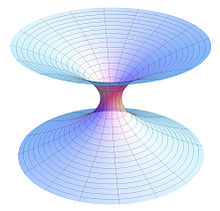Basic of Physics
Physics belongs to the natural sciences and is one of the oldest academic disciplines, whose main goal is to understand how the Universe behaves. The history of physics certainly spans a long span of time, but there is no agreement on the date of birth of physics. Some scholars have argued that its documented beginning would have taken place in the Indus Valley Civilization. Other historians of science identify the philosopher Thales among the first to reject the non-naturalistic and non-rational explanations of nature (myths and cosmogonies with a religious background). He was also among the first to ask the question, what is the fundamental substance or the material principle at the base of the universe.
Time and space are fundamental quantities of physics, together with mass, temperature, amount of substance, intensity of current, and luminous intensity. Before the twentieth century the concepts of space and time were considered absolute and independent: it was thought that the passage of time and the spatial extensions of the bodies were independent of the state of motion of the observer who measured them. After the advent of Einstein's theory of relativity physicists had to change their opinion.
Mass is a fundamental physical quantity. It has as a unit of measurement in the International System the kilogram and is defined in Newtonian mechanics as the measure of the inertia offered by the bodies to the change of their state of motion. In Einstein's theory of relativity, through the principle of equivalence, and it is also linked to the energy of a body by the formula E = mc². The mass always remains constant unlike the weight. Example: on the moon the mass remains constant, while the weight becomes one sixth.
Classical physics studies all phenomena that can be explained without resorting to general relativity and quantum mechanics. The main theories that compose it are classical mechanic, thermodynamics, electromagnetism (which includes optics) and the Newtonian theory of gravity. Substantially all the theories that were produced before the beginning of the twentieth century are part of classical physics. The laws of classical physics, despite not being able to explain some phenomena, such as the precession of the perihelion of Mercury, or the photoelectric effect, are able to explain most of the phenomena that can be observed on Earth.
The main theories that make up this new physics are quantum mechanics and general relativity. More precisely, all the theories that have been produced since the twentieth century to try to explain some phenomena that classical theories could not prove are part of this category. Space and time are no longer considered absolute, but are relative to the reference system that is chosen, and are not separated, but form a single entity called space-time.

Comments
Post a Comment